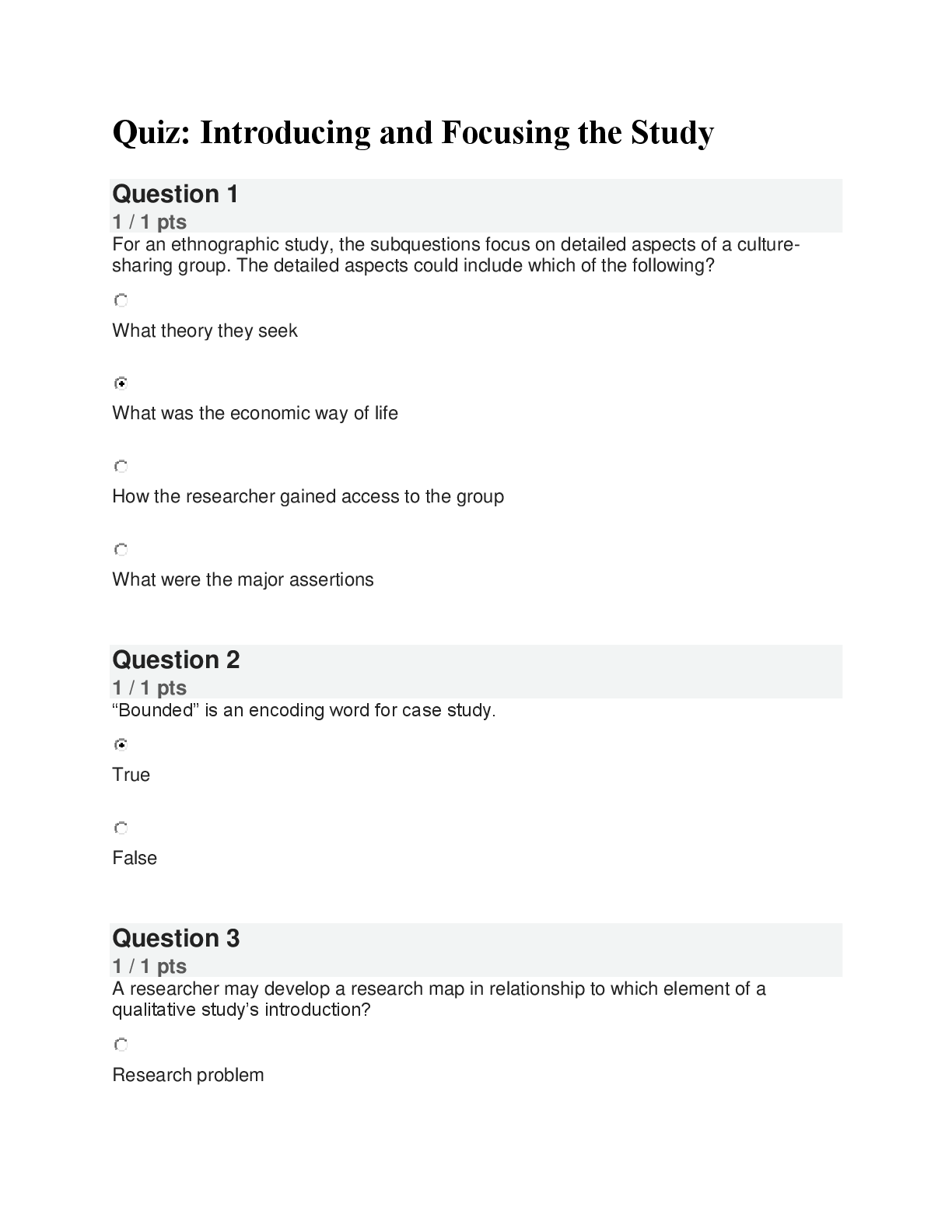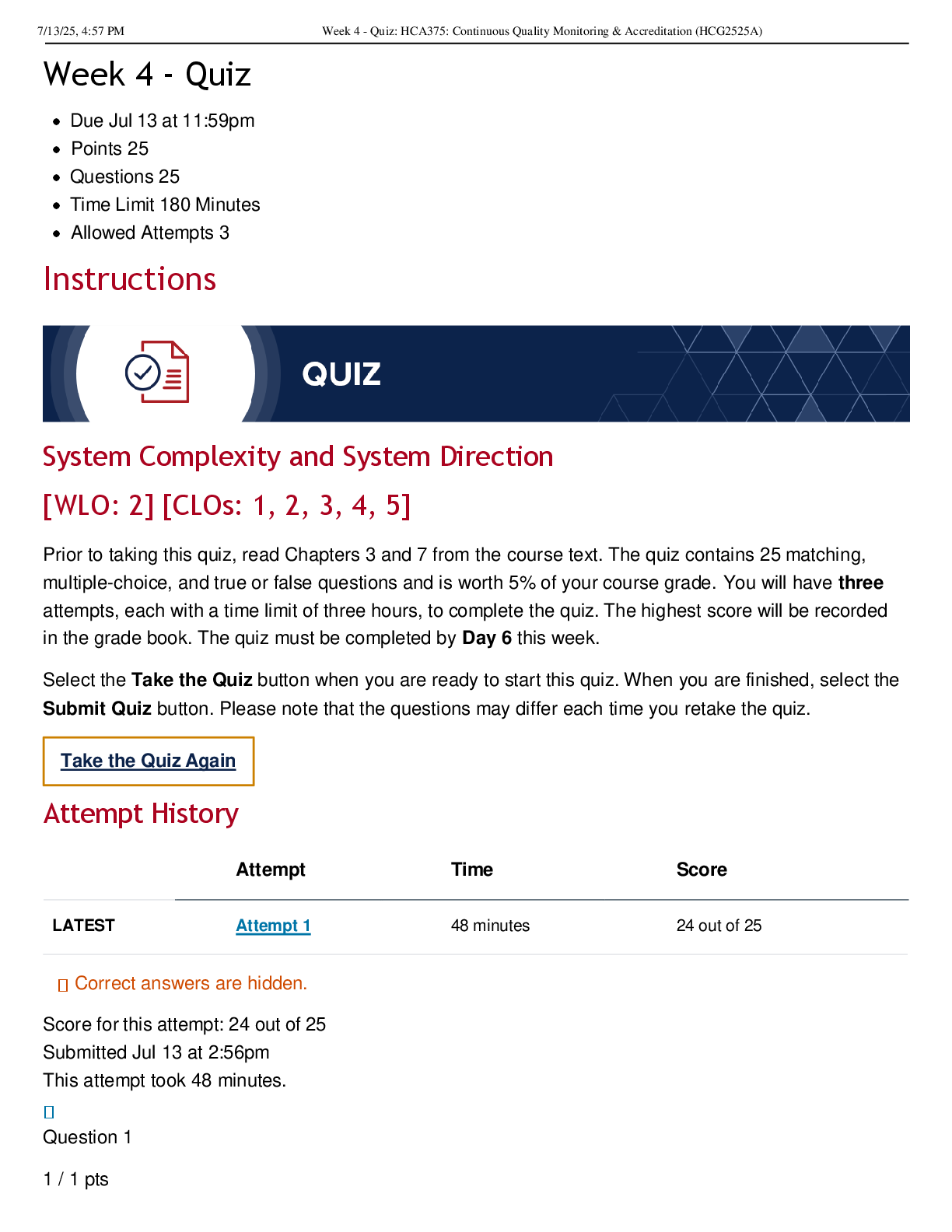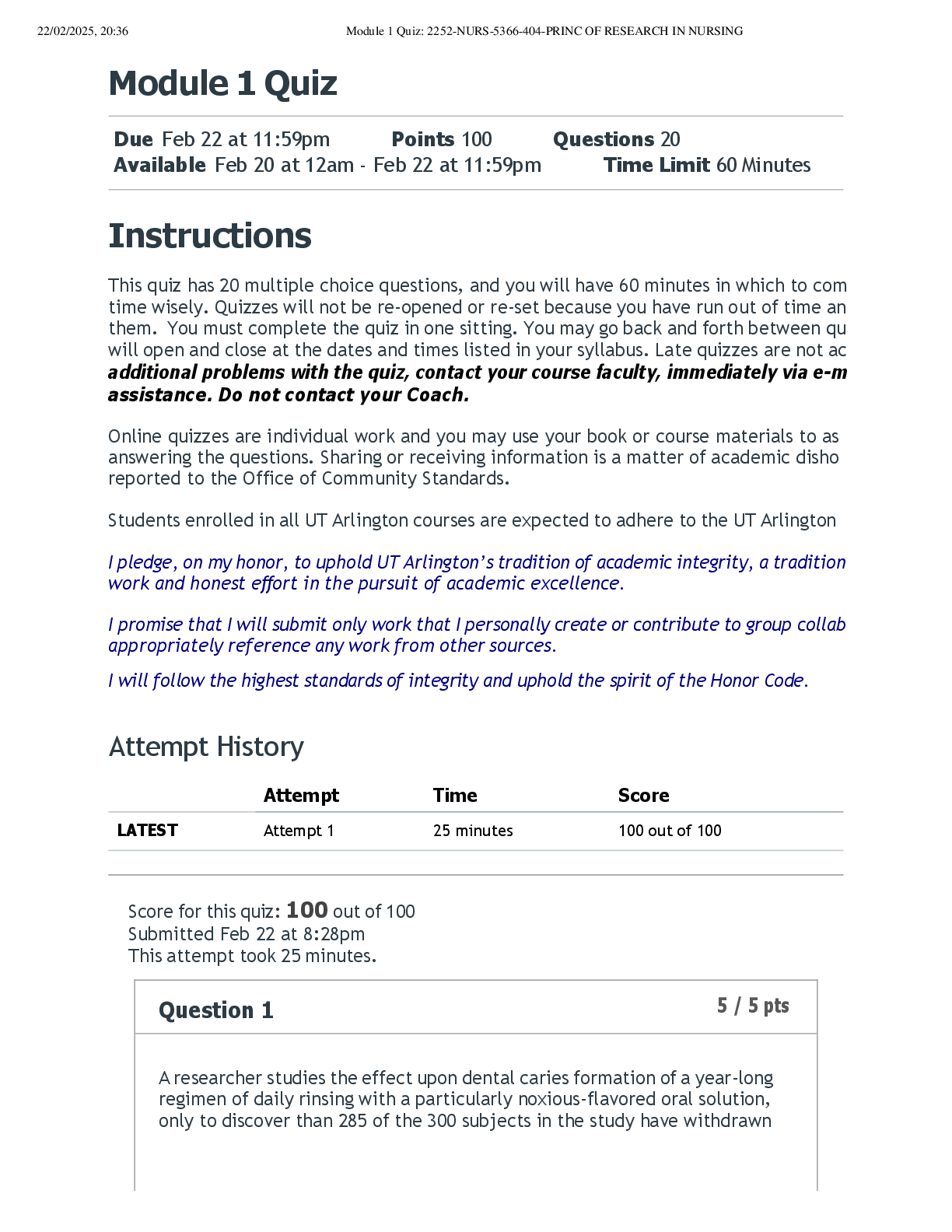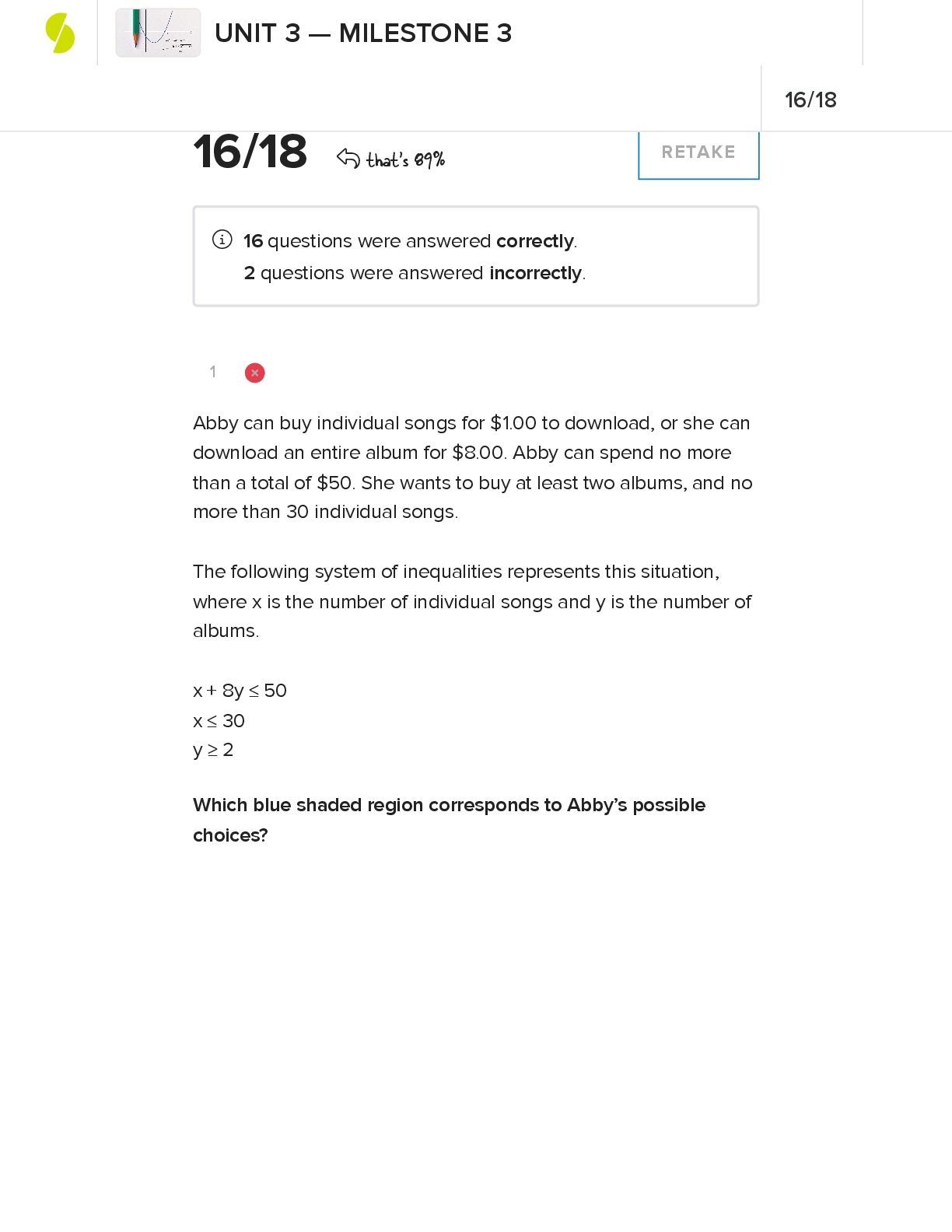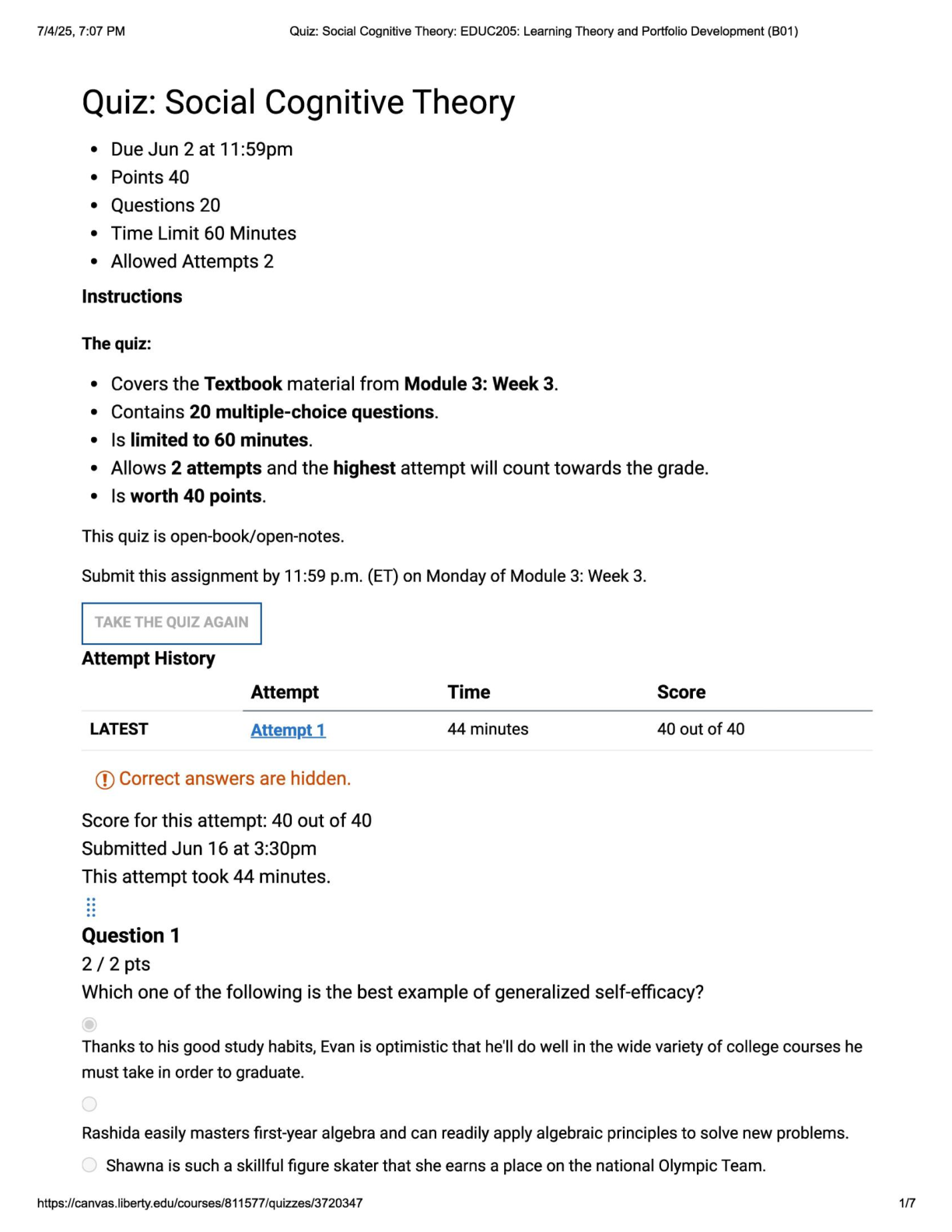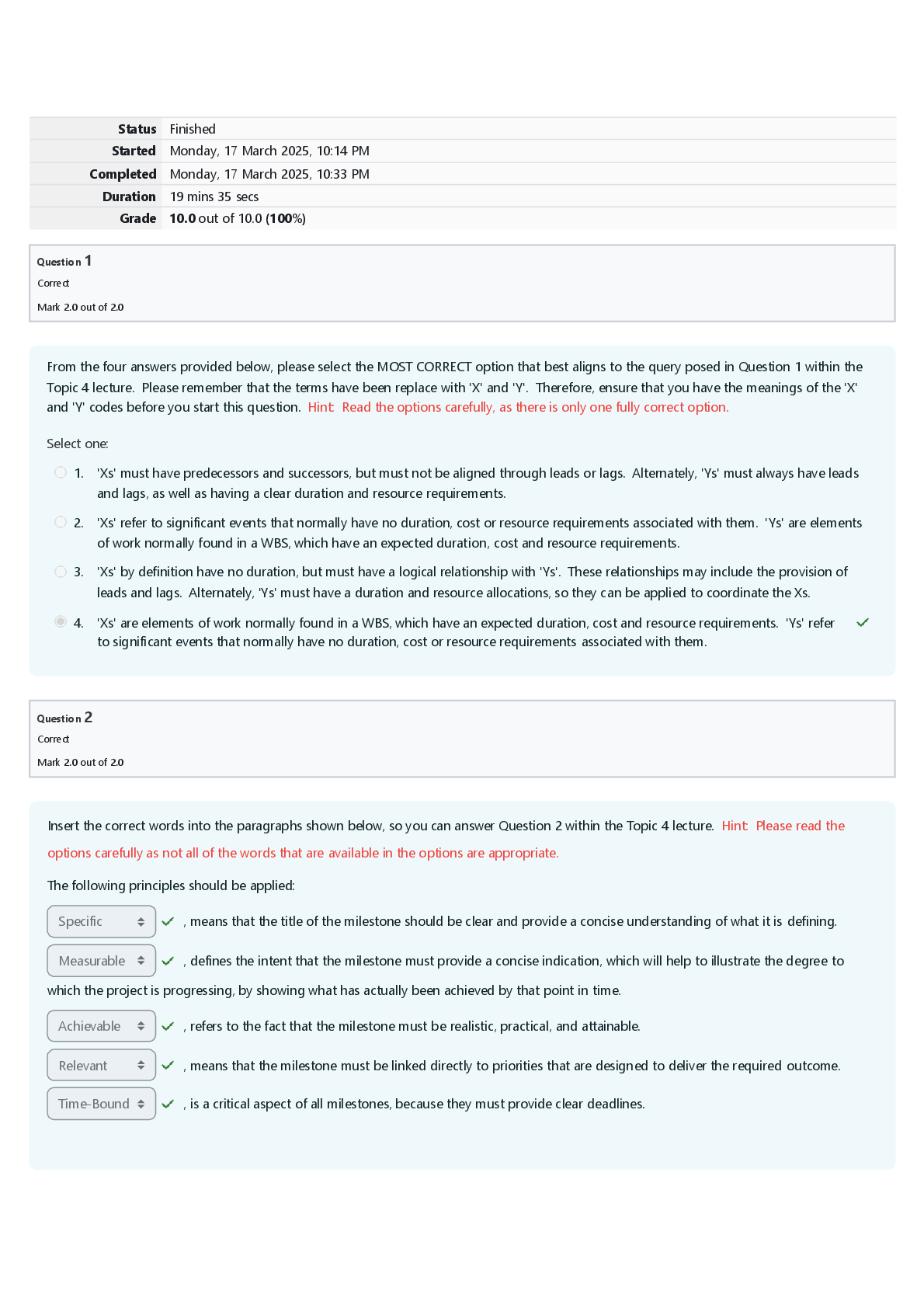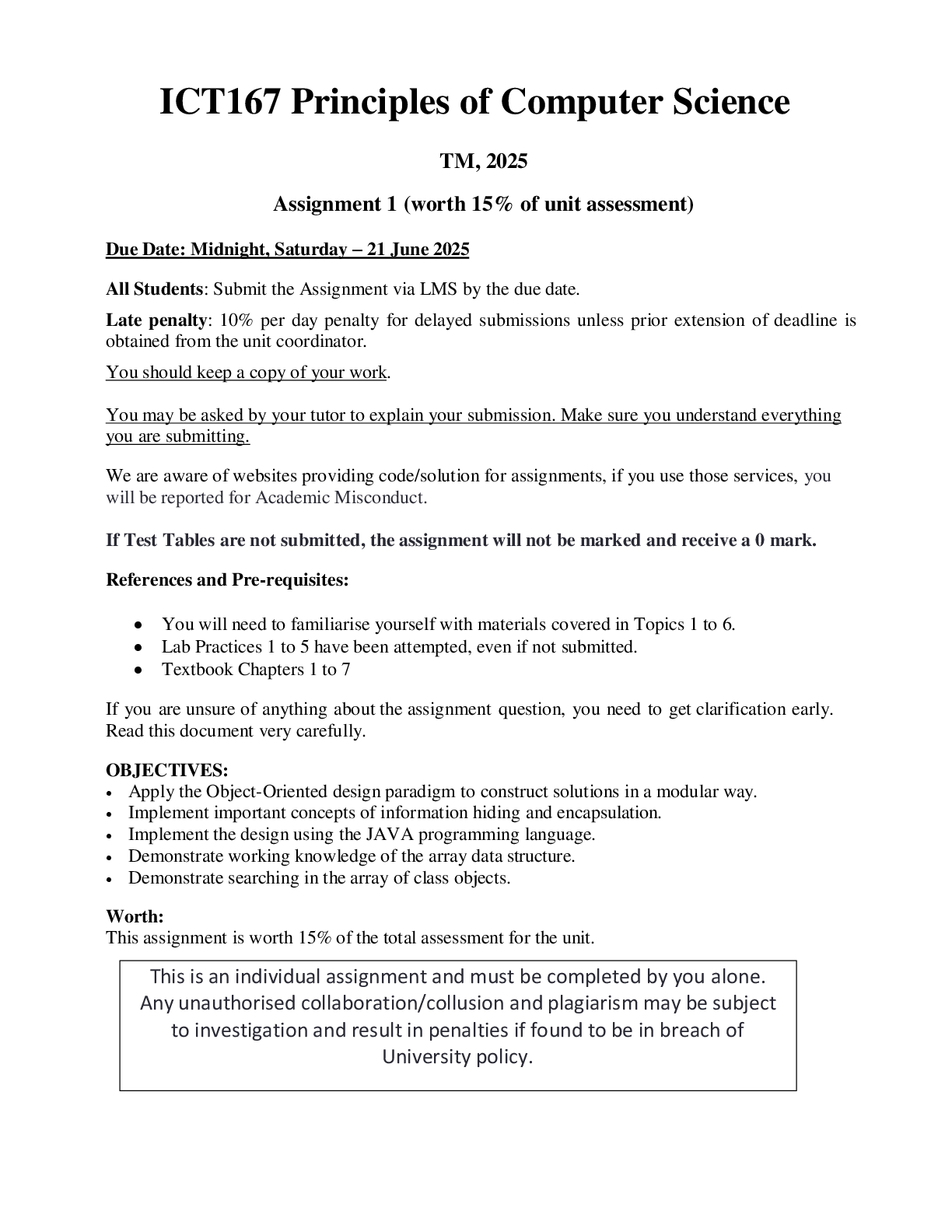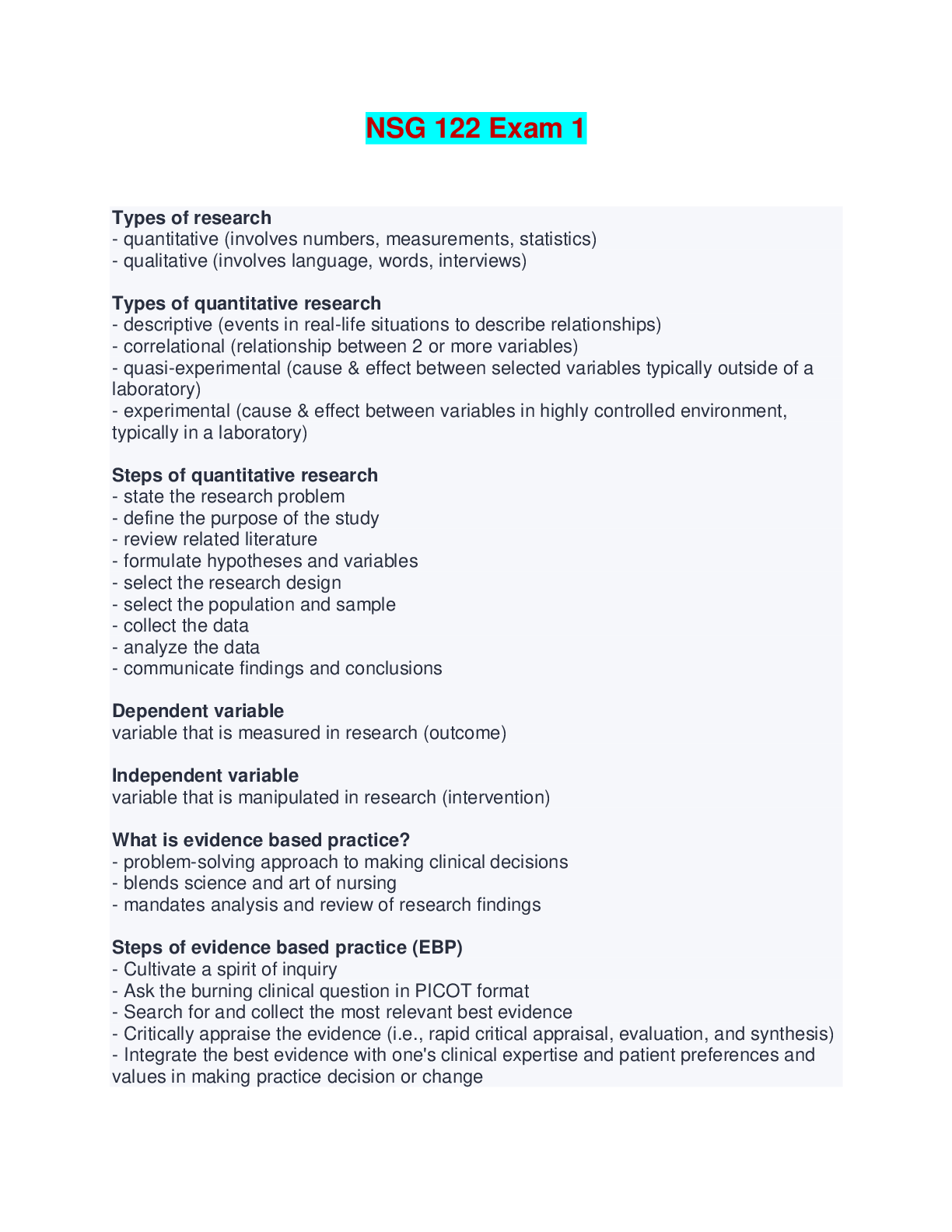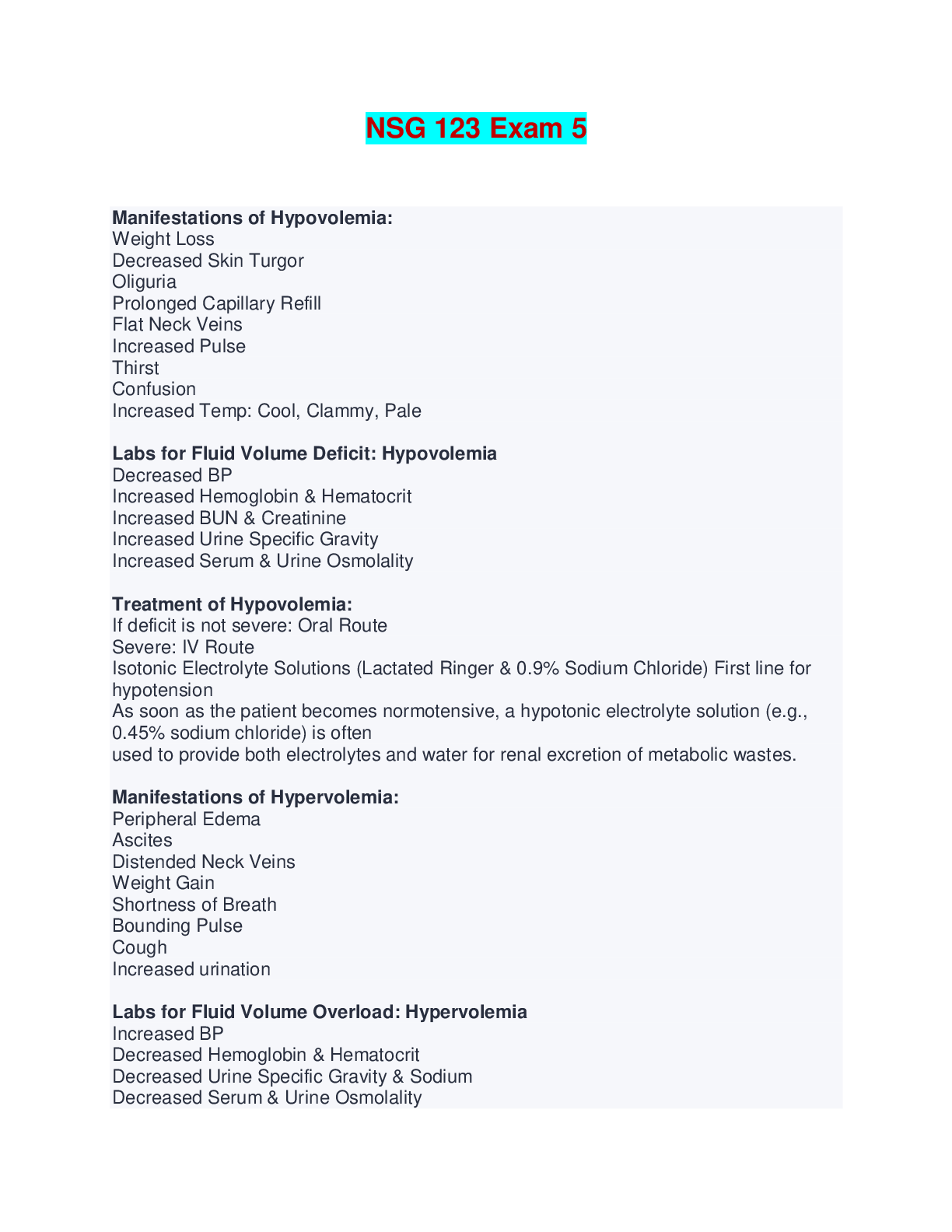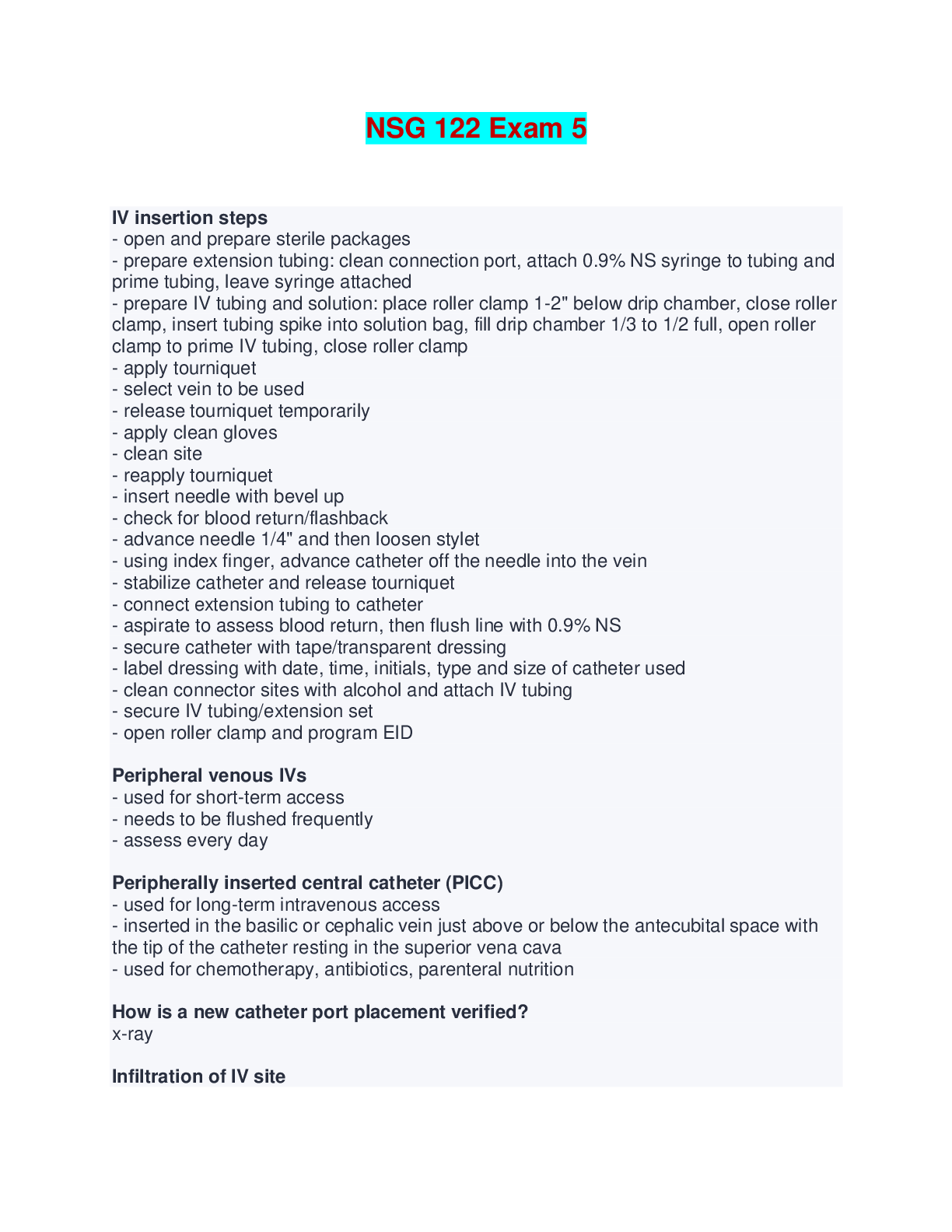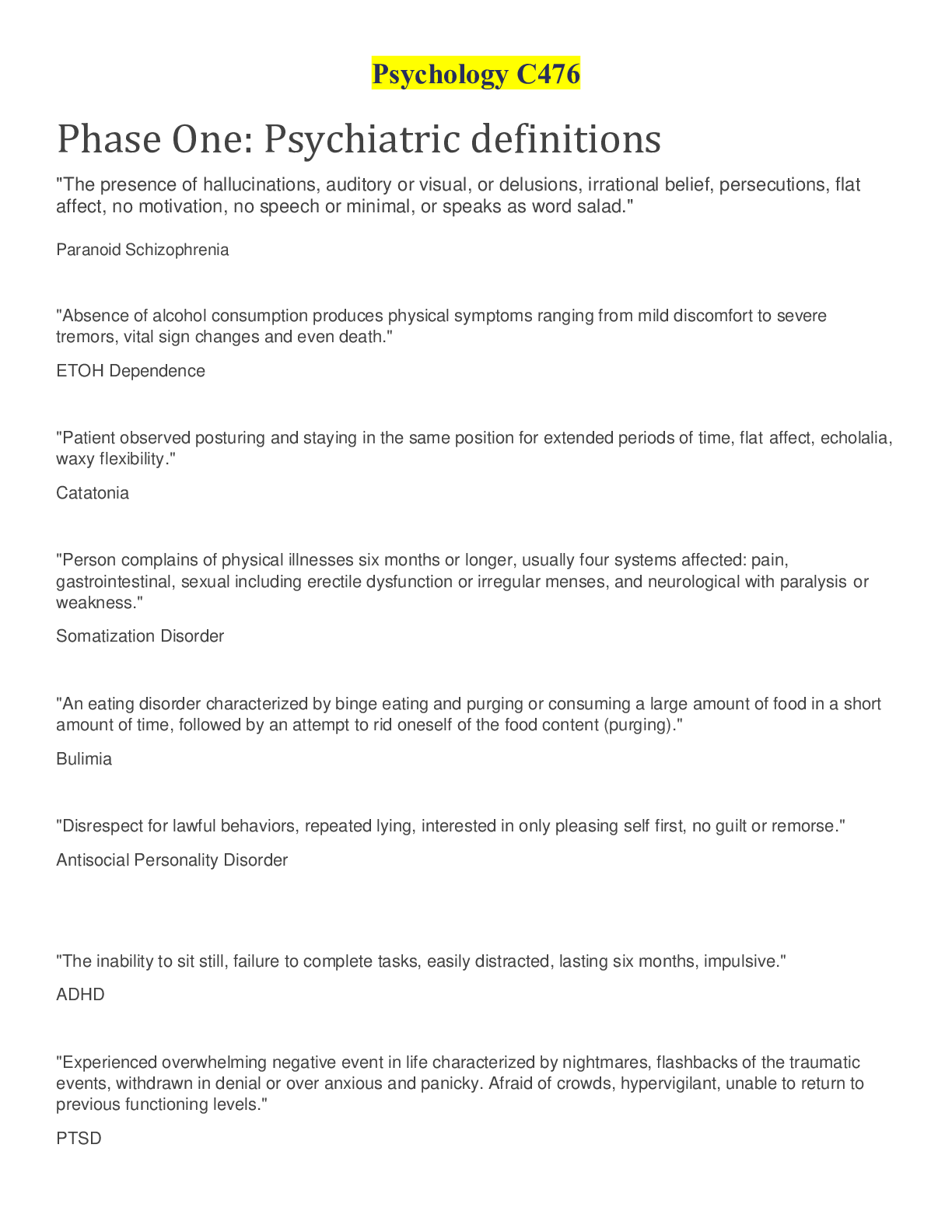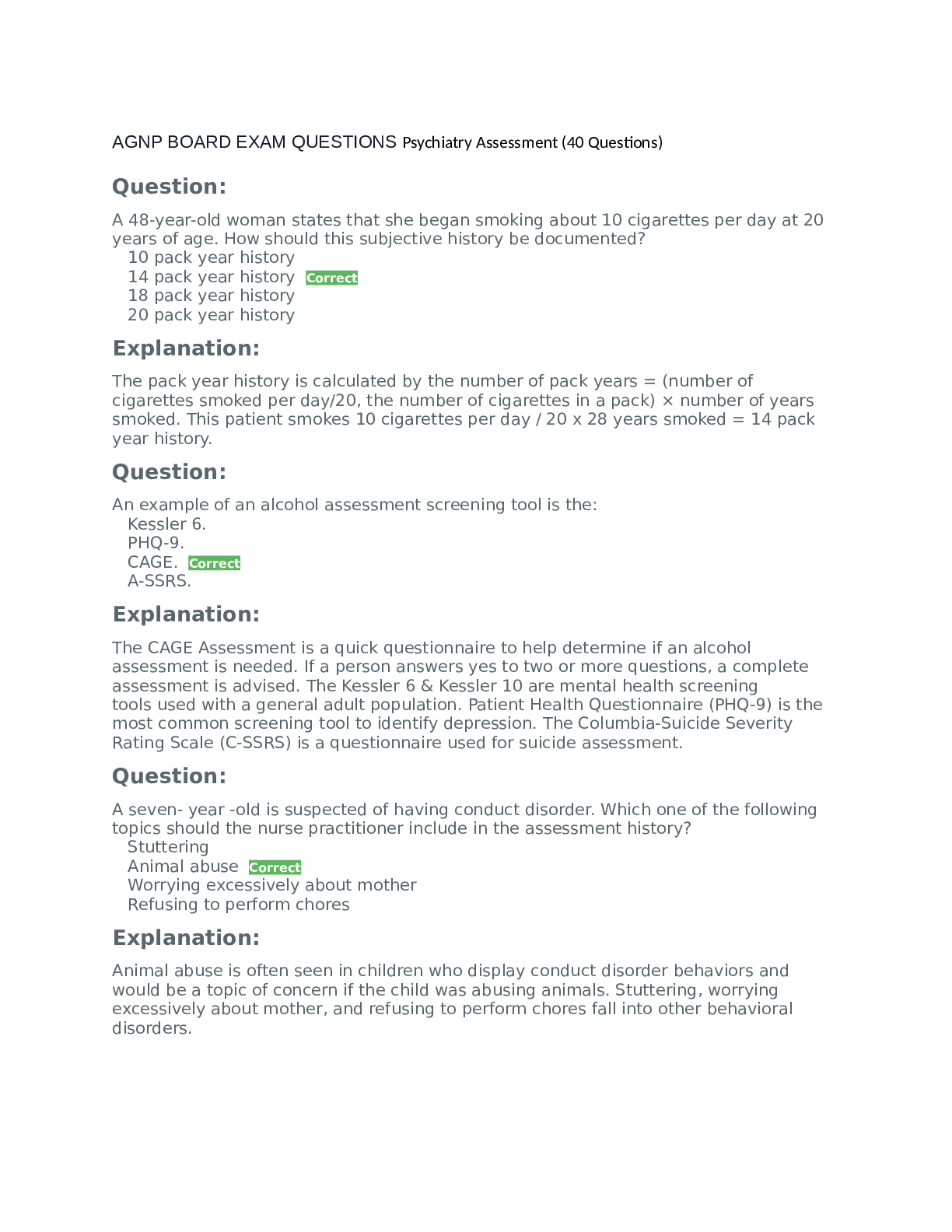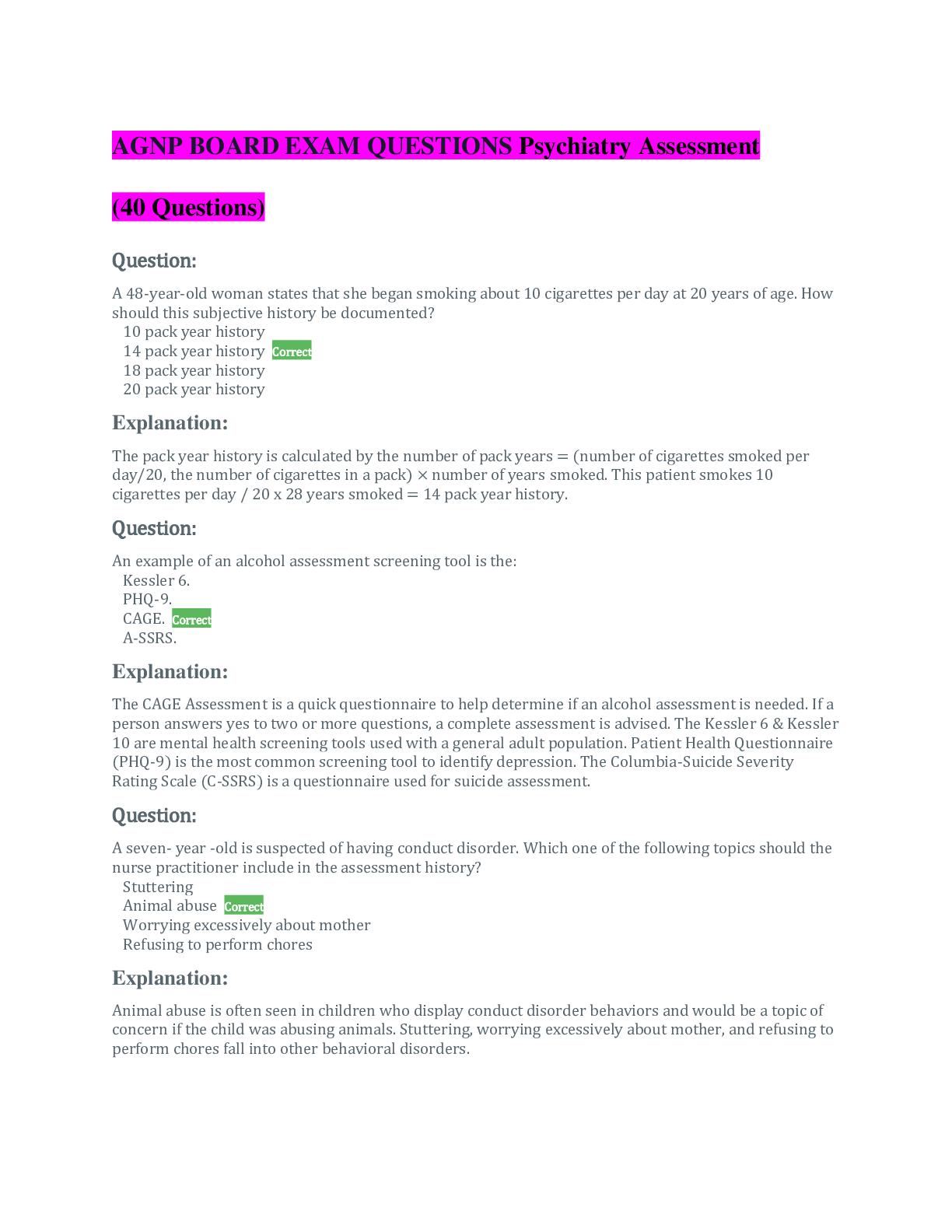Psychology > EXAM > PSY 260 Introduction to Psychology Research and Ethics - PSY 260 EXAM 1 (All)
PSY 260 Introduction to Psychology Research and Ethics - PSY 260 EXAM 1
Document Content and Description Below
PSY 260 EXAM 1 Release - action potential opens voltage-gated Ca2+ channels for it to go into the neuron Exocytosis - pushing the synaptic vesicles out of the cytoplasms What happens to the NT once it... is released into the synaptic cleft? - receptor activation, aka the NT binds to the receptor like a key in a lock Inactivation - when the NT goes back into deactivation, either degredation or reuptake Degradation - when the enzymes simply destroy it to stop the NT action Reuptake - pumping the NT back into the terminal button, whether it is either recycled or destroyed Receptors - there are two primary receptors: inotropic and metabotropic Ionotropic - attached to an ion channel that is controlled by a chemical, which will open or close the channel (very fast and short-lived action) Metabotropic - attached to a G-protein, where it can open/close/modulate ion channels, activate enzymes that produce a second messenger inside the cell (slower effects, but also bigger effects) Second messenger - can cause channels to change or alter biochemical processes in the neuron itself Question: how can activation of an ionotropic receptor lead to EPSPs and IPSPs? - Answer: It can open up an ion channel for charged ions, which can depolarize or hyper-polarize the cell Where are the receptors - in the postsynaptic neuron, which is receiving the neurotransmitter with the message (we can also see receptors in the presynaptic neuron aka. autoreceptors) Autoreseptors - in the presynaptic neuron that acts as a negative feedback system, and send messages down neurotransmission when there are too many neurotransmitters (synthesis or release) activated by the neurotransmitter released by that presynaptic neuron Acetylcholine - first neurotransmitter initially called Vagusstoff, and sows the heart down (aka inhibitory) necessary for the synthesis of a neurotransmitter (neuron cholinergic) -made from choline + acetyl enzyme - two classes of receptors: nicotinic and muscarinic Nicotinic receptor - ionotropic, nicotine binds to these, and opens up ion channel Muscarinic receptor - metabotropic, activate a gene protein and cause chain reactions Myasthenia gravis [Show More]
Last updated: 2 years ago
Preview 1 out of 24 pages
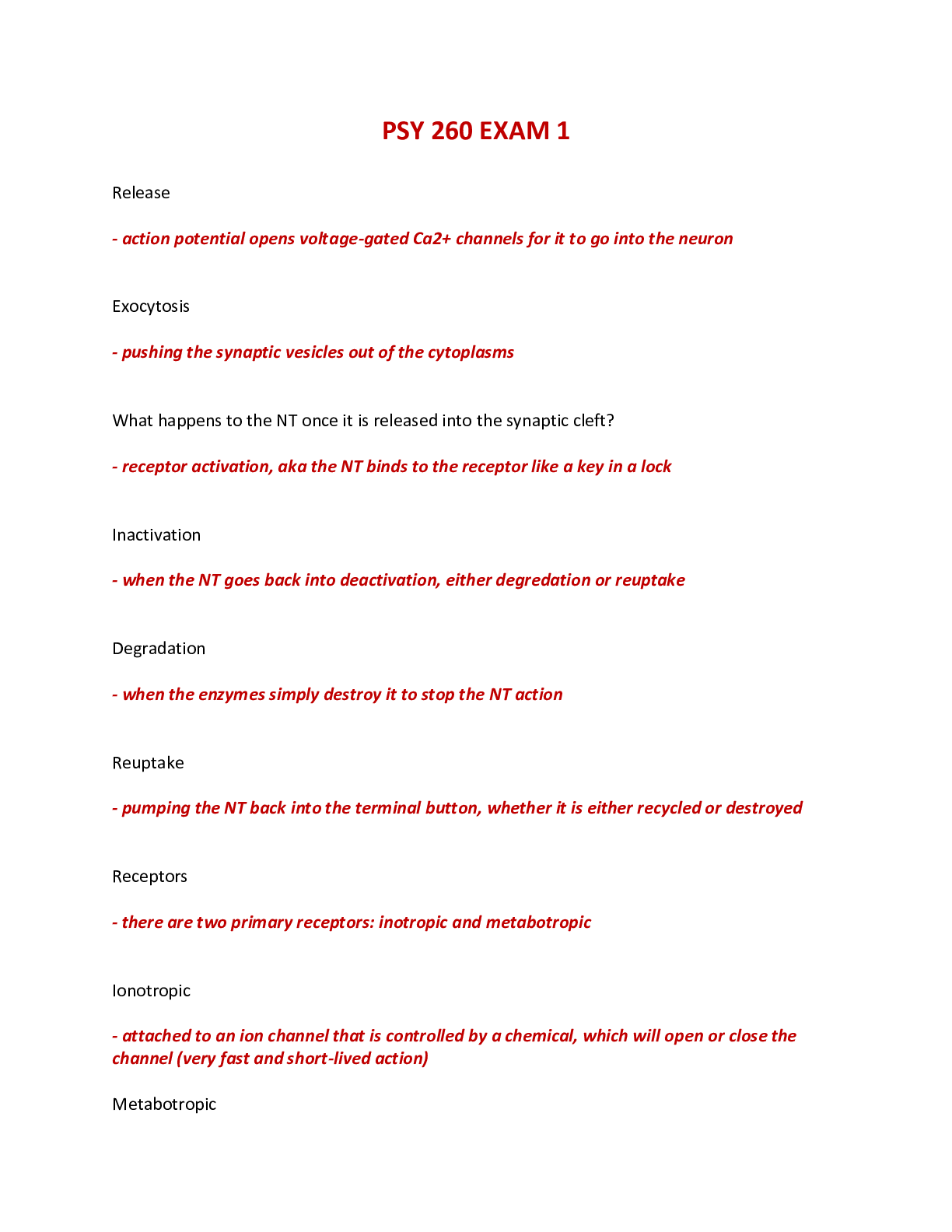
Buy this document to get the full access instantly
Instant Download Access after purchase
Buy NowInstant download
We Accept:

Reviews( 0 )
$15.00
Can't find what you want? Try our AI powered Search
Document information
Connected school, study & course
About the document
Uploaded On
Mar 18, 2022
Number of pages
24
Written in
Additional information
This document has been written for:
Uploaded
Mar 18, 2022
Downloads
0
Views
130

